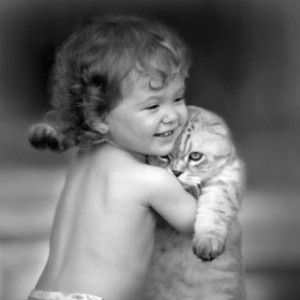 Montessori said, “Who labors so patiently to create a man? It is the child. The adult is the procreator but the child is the creator. Let us look at the children themselves and let us try to see their great achievements instead of staring ourselves blind at their shortcomings and errors that are so often the result of adult interference and failure to understand. We shall never get understanding by studying mistakes and errors”.
Montessori said, “Who labors so patiently to create a man? It is the child. The adult is the procreator but the child is the creator. Let us look at the children themselves and let us try to see their great achievements instead of staring ourselves blind at their shortcomings and errors that are so often the result of adult interference and failure to understand. We shall never get understanding by studying mistakes and errors”.
Dr. Montessori began her schools in the ghettos of Italy. This effective system of learning math, reading, and tactile awareness encourages a child to have freedom of exploration within few restrictions. The school environment was enhanced with specific materials, designed by Montessori, to achieve specific results. A four-year-old child might be observed pouring corn from one container to the next for hours without interruption (challenging the current notion that children have short attention spans). Children notice subtle differences with each pour. Something new and different is experienced to formulate in the child’s mind an understanding of the whole. Montessori understood the processes of the human development, mind and learning by engineering an environment that is conducive to optimal learning. The simplicity of thought encourages the ability to focus and discover subtleties in an experience.
A special part of learning in the Montessori classroom is the care of the materials. Neglected routines not learned in the home, children are taught to clean, wash, and take care of equipment as part of the daily routine. At all times, these activities are considered an integral activity to daily life. Montessori classrooms display immaculate children’s books that are well preserved for up to forty years. Treating books and equipment with reverence is an integral part of the lesson.
Mastery of the tactile, kinesthetic environment is important. Taste, touch, smell and sound are alive and meaningful. Children are encouraged to explore their senses. The use of paper and pencils is non-existent considered inappropriate for early learning. All subject areas like reading, math, writing and geography are based upon tactile experiences.
Montessori believed that it was in observation that a teacher learned the essence of childhood intelligence. Teachers become observers before practitioners. The St. Nicholas teacher-training program in England requires beginning teachers to observe student activity for one year. What the teacher learns by observation is the innate gifts and talents children posses and left to their own natural behaviors, children display qualities of lessons to teach. In observation, the teacher develops a perspective of the essence of each child. For example, children eating lunch will readily exchange and share food with others. When a younger child spilled something, other children would assist in the cleanup. This is the reference, the known and familiar, where the teacher’s lesson on sharing and/or room cleanliness would begin. In traditional classrooms, often lessons are so abstract that children have no point of reference to recognize. The mind in need of relevant interconnections cannot create abstract thinking unless it is part of a known experience. Adults teach abstract theories without a foundation in a child’s reality of experience. Observations catalogued in journals are compiled, compared and formulated for teacher reference.
The miracle of Montessori’s Italian children was that, “they had shown the strange powers of the mind while it is still sensitive and absorbent, still in partly an unconscious state before it comes completely under the domination of consciousness and reason, of established habits and prejudices; under the right conditions, children will have a natural spontaneous goodness and love, a natural desire to learn and work.“
